From the Center for Western Priorities' 9/18/17 Post
Interior Secretary Ryan Zinke wants shameless giveaways to big coal, oil, and timber
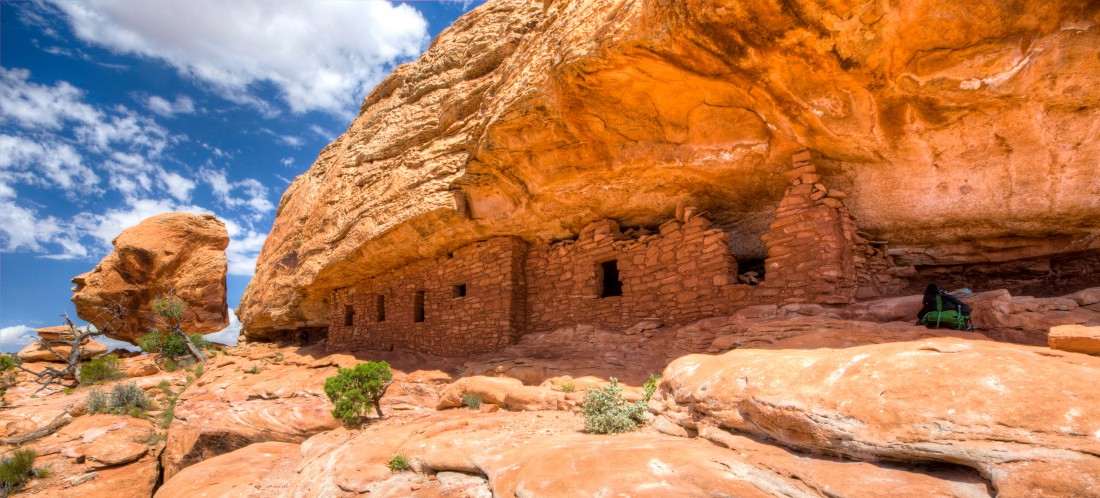
Since Interior Secretary Ryan Zinke submitted a set of secret recommendations to President Trump in August, reporters and the public have been left to wonder exactly what he wants to do to America’s national monuments.
Now, thanks to a report leaked to the Washington Post, we know.
Secretary Zinke was supposed to submit a final report on August 24th, and indeed, the memo contains the words “final report” in the subject line. However, it does not contain any specific recommendations that President Trump could follow even if he wanted to. Rather, it reads like a mishmash of facts copied from Wikipedia and talking points straight from Zinke’s deep-pocketed industry backers, including coal, oil, timber, and commercial fishing interests.
This shoddy research and writing is to be expected, given that Secretary Zinke left for a romantic overseas vacation just before his report was due, and his Interior Department offered its own misleading messaging following the report deadline.
Despite the lack of detail, we looked for the winners and losers at each monument Secretary Zinke included in his “final” report:
Bears Ears National Monument, Utah
WINNERS: Oil and gas companies, looters
LOSERS: Native American tribes, archaeologists
Located in southeast Utah, the Bears Ears region is home to tens of thousands of archaeological sites. Threatening to erase 90 percent of the monument, as the state of Utah has requested, sends a clear message to looters who have run rampant over the years that those sites are not worthy of protection. This map produced by the Utah Division of State History shows definitively there is no way to shrink Bears Ears by 90 percent without leaving thousands of archaeological sites unprotected.
Such a move would be a slap in the face to the five Native American tribes that asked President Obama to protect Bears Ears as a national monument, and an obvious giveaway to the oil and gas companies that are eager to step in if President Trump opens up Bears Ears to drilling.
Grand Staircase–Escalante National Monument, Utah
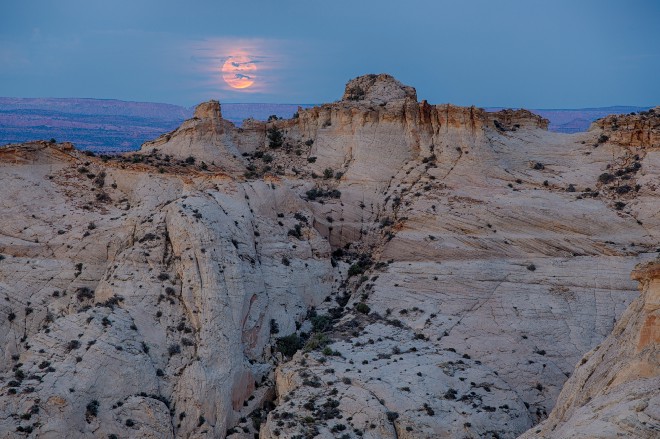 WINNERS: Coal companies
WINNERS: Coal companies
LOSERS: Local businesses
Secretary Zinke doesn’t even try to pretend this attack is about anything other than the “several billion tons of coal and large oil deposits” contained within Grand Staircase–Escalante. There is no reason to shrink the monument except to open it up to coal mining.
Doing so would have an immediate and devastating effect on local business owners, who tried repeatedly to meet with Secretary Zinke during his trip to Utah. Zinke ignored them, and left Utah as a crowd, led by the Escalante Boulder Chamber of Commerce, chanted “talk to us” outside the gates of the airport
Rio Grande del Norte National Monument, New Mexico
WINNERS: Nobody
LOSERS: Hunters, anglers, outfitters
First protected in 2013, the Rio Grande del Norte National Monument not only has broad support from local stakeholders, the monument has been a boon for local communities across northern New Mexico. The spectacular high plains landscape, which is carved by steep canyons, is home to impressive archaeological sites, core wildlife habitat, and opportunities for hunting and fishing.
It’s unclear who would benefit from modifying the monument. Rio Grande del Norte National Monument is widely supported by local politicians and there are no apparent special interests that have organized to erase monument protections. Its inclusion can most likely be chalked up to Secretary Zinke’s disdain for America’s conservation legacy.
Organ Mountains–Desert Peaks National Monument, New Mexico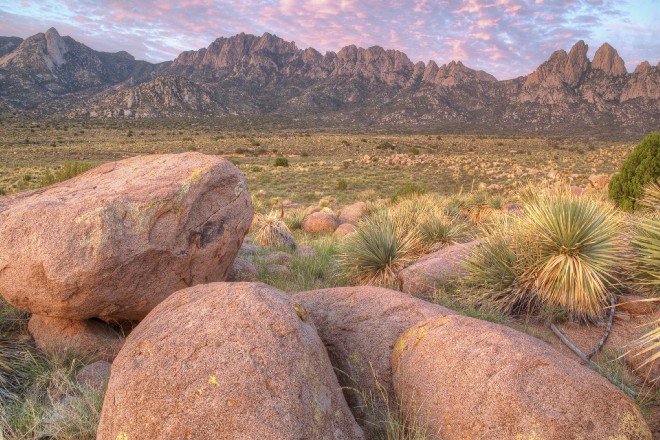
WINNERS: Rep. Steve Pearce
LOSERS: The economy of Las Cruces
Lying just outside of Las Cruces, Organ Mountains-Desert Peaks was finally protected in 2014 after years of work by stakeholders in and around the city. The Organ Mountains-Desert Peaks National Monument — which protects critical wildlife habitat, cultural and historical sites, and world-class outdoor recreation areas — is being leveraged by Las Cruces to attract new businesses and talented employees attracted to areas near protected public lands.
The biggest opponent of the monument is Rep. Steve Pearce, a member of the congressional “Anti-Parks Caucus” that works to remove protections from American lands. The inclusion of Organ Mountains–Desert Peaks in Secretary Zinke’s report is a clear nod to Pearce, whose top donors are almost entirely oil and gas companies.
Gold Butte National Monument, Nevada
WINNERS: Cliven Bundy
LOSERS: Tribes, wildlife, law enforcement
Designated in 2016, Gold Butte National Monument protects nearly 300,000 acres of rugged desert landscape in southeastern Nevada. Featuring picturesque red rock formations, sandstone canyons, unique Joshua trees, and the endangered desert tortoise, the region has been inhabited for thousands of years, as evidenced by spectacular rock art there.
The designation of Gold Butte was supported by a diverse range of tribes, Latino organizations, and small businesses. Notably, the monument is near the home of Cliven Bundy, the scofflaw rancher who led an armed standoff with federal officials. Eviscerating Gold Butte National Monument would no doubt be a gift to the Bundy family and their supporters who don’t recognize the right of the federal government to even own, much less manage, our public lands.
Cascade-Siskiyou National Monument, Oregon
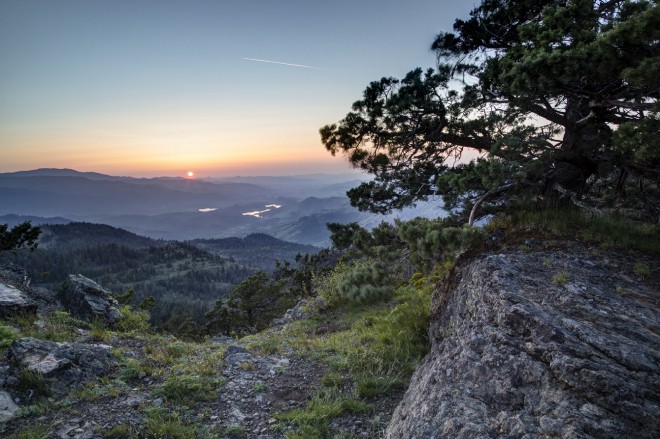 WINNERS: Timber companies
WINNERS: Timber companies
LOSERS: Hunters, anglers, wildlife
Attempting to shrink Cascade-Siskiyou National Monument is a clear giveaway to the timber companies that have long wanted to log the old-growth forests of southern Oregon. Doing so would endanger the huge diversity of wildlife in the region, as well as limit access for sportsmen who hunt and fish in the monument. The executive director of the Association of Northwest Steelheaders quickly called Zinke’s recommendation “the worst attack on Oregon hunters and anglers I’ve seen in my 20 years as a fishing guide.”
Katahdin Woods and Waters National Monument, Maine
WINNERS: Timber companies
LOSERS: Boaters, hikers, the St. Clair family
Secretary Zinke advocates explicitly for “active timber management” — better known as logging — at Katahdin Woods and Waters in Maine. Such a move would go against the wishes of the St. Clair family, which donated Katahdin Woods and Waters to the American people specifically so it would be “unimpaired for future generations’ enjoyment.”
In addition to taking away recreation opportunities for the boaters and hikers who are just starting to discover Maine’s newest national monument, turning against the St. Clair family in this way would send a clear message to other families that want to preserve their land for future generations: you can’t trust the Interior Department to be a responsible steward of your gift.
Rose Atoll Marine National Monument,
Pacific Remote Islands Marine National Monument,
Northeastern Canyons and Seamounts Marine National Monument
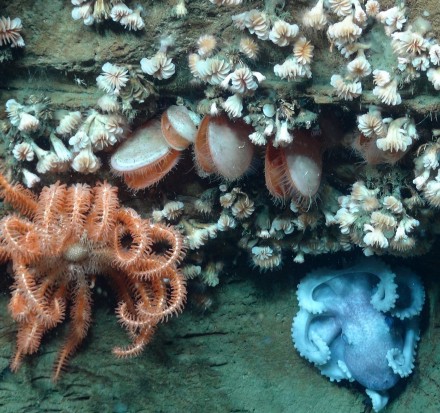 WINNERS: Industrial-scale fishing
WINNERS: Industrial-scale fishing
LOSERS: Marine life, coral reefs
The attacks on three marine national monuments have one thing in common: industrial-scale fishing operations. (Recreational fishing is still allowed in all marine monuments.) Despite the fact that the vast majority of U.S. waters are, and will remain, open to commercial fishing, Secretary Zinke wants to open fragile ecosystems like the coral reefs at Rose Atoll and Pacific Remote Islands, as well as whale, dolphin, and porpoise habitat at Northeast Canyons and Seamounts to industrial use.
Photo of the Bears Ears National Monument provided by the BLM
Photo of the Grand Staircase National Monument provided by the BLM
Photo of the Organ Mountains-Desert Peaks National Monument provided by the BLM
Photo of the Cascade-Siskiyou National Monument provided by the BLM
Photo of the Northeast Canyons and Seamounts National Monument provided by the NOAA

